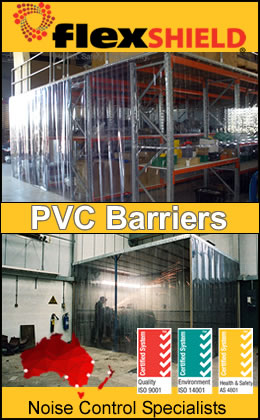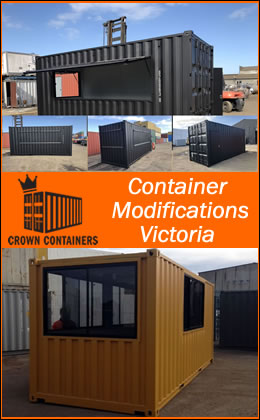Recycling Solutions :
What to do with paper waste:
Two Newcastle printers have a few easy solutions
- Office paper waste is shredded and used by a customer for packaging material.
- Paper off-cuts are collected for recycling.
- Scrap paper and off-cuts are donated to community groups.
- A large quantity of cartons needed for deliveries are purchased from another local business that has excess carton-box waste. Purchasing these once-used cartons costs half the price of new cartons. ‘We then request our customers to return these cartons to us. They are used repeatedly until no longer suitable and are then sent to a paper and board recycler’.
What can printers do to reduce
waste?
Good waste minimisation is not just about reducing your use of paper but also about reducing your generation of all solid and liquid wastes, and your use of resources such as energy and water.
Conduct a waste audit of your office and workshop area to identify your waste types, sources and volumes. You can then assess the feasibility of minimising, reusing and recycling the various wastes.
Develop and implement a waste minimisation policy and put in place procedures to avoid, reuse or recycle wastes. Separate your different solid and liquid wastes, e.g. paper, timber, pallets and solvent waste. Mixing wastes may make them unsuitable for reuse or recycling. Clearly label waste containers and place them in convenient areas to encourage their use by staff.
What can you do to reduce solid
wastes?
Board and paper
Talk to your suppliers about returnable packaging: will they take back the delivery packaging items such as boxes for reuse? If not, can you reuse cartons for packaging and delivery?
Analyse the quantity of machine set-up- and-run waste being allowed in your estimating process and establish if these quantities can be reduced. Inform your customers of the amount of paper that will be wasted if non-standard size
print jobs are requested.
Use computer technology in pre-press operations to reduce the quantity of waste paper generated.
Show your clients a range of paper stocks, recycled and virgin, and point out the advantages and disadvantages of each. Ask your suppliers about the advantages and disadvantages of various stocks. Recycled stocks have improved significantly in recent years and come in many different grades and coatings (smooth and textured finishes).
Recycle all board and paper that cannot be reused. Separated waste often provides a higher recycle return or reduced collection costs, so talk with your recycling companies to help you identify how best to undertake this.
Metal plates and wire mesh screens
Aluminium plates and wire mesh screens may be recycled by a metal recycler. Clean them before placing them in a receptacle for scrap metal recycling.
Timber
Reuse timber pallets in your print shop or return them to paper suppliers.
Containers
Reduce your waste disposal costs by purchasing products from suppliers that provide a collection, reuse or refill service for containers. Depending on what was originally stored in it (e.g. photographic chemicals), a container may be classified as hazardous or industrial waste. Have a licensed contractor collect these containers.
Glass and some plastic containers may be able to be recycled. Check with your waste services contractor or your local council.
Printing screens
Polyester or nylon screens that are free of ink can be disposed of as general solid waste.
Reuse or recycle screenprinting frames.
Rags
Use scrap material rags rather than new disposable wipes. Reusing scrap cloth means that you are using someone else’s waste instead of using a product that has to be manufactured from raw materials. Reuse rags as long as possible. Use a dirty wipe for the first pass and a clean one for the second. If possible have the rags laundered but first remove as much solvent as possible from the rags (e.g. by wringing or squeezing). This will make the rags easier to launder.
Solutions to Pollution by Newcastle printer – wooden pallets
A Newcastle printer used wooden pallets and skids to make bench tops in the factory. It also offers wooden pallets to customers for their own use. Wooden pallets take up a large amount of waste bin capacity, thereby
increasing the number or size of bins required and ultimately the hire and clearing charges. Reuse of the timber was a simple solution.
Dispose of solvent- or ink-soaked rags that cannot be laundered as hazardous waste.
If you do use disposable wipes, remove as much solvent from them as possible before disposing of them. Keep the used
wipes and the spent solvent in separate containers.
Use parts-washing equipment instead of rags to clean the trays that collect solvents and inks below the press rollers.
What about liquid and hazardous wastes?
General liquid and hazardous wastes.
Material put into your industrial waste bin will generally go to landfill. Place only dry, solid, inert wastes in industrial
waste bins. Do not put any liquid or hazardous waste in your bin.
The EPA can give you a classification list of hazardous and/or industrial waste. Inks, varnish, glues, solvents and photographic wastes are some of the wastes from printing premises that may be classified as hazardous and/or industrial.
Refer to information sheet 6, ‘Hazardous Materials’ for additional advice about hazardous materials.
Some problem wastes, such as drums containing hazardous waste sludge, require special attention for safe and proper disposal. Ask your local council or the EPA about disposal requirements for these.
Assess, classify and manage liquid wastes in accordance with the relevant EPA guideline. Contact the EPA Pollution Line for a copy of this guideline. Liquid waste can generally be handled in one of four ways depending on its classification and quantity:
1. It can sometimes be treated and discharged to the sewer. A Trade Waste Permit must be obtained first. (Refer to
information sheet 4, ‘Trade Wastewater’.)
2. At premises licensed by the EPA it can be treated and discharged in accordance with the provisions outlined in the EPA licence.
3. Under some circumstances it may be recycled on site.
4. It can be removed by a licensed waste contractor for treatment and disposal at a licensed waste facility.
Store all liquid wastes awaiting collection by waste contractors within a sealed, bunded and covered area to prevent possible spills and contamination of the stormwater system.
Waste contractors
If you have more than 200 kilograms of industrial or hazardous waste for transportation you should use only a licensed waste transporter. Licensed transporters are required to carry their EPA licence in their vehicle. Ask to see it. Keep all receipts for three years as evidence that you have disposed of your wastes properly.
Photographic wastes
If you use photographic processes for image conversion or plate-making follow the PURE (Photographic Uniform Regulations for the Environment) Code of Practice for Liquid
Waste Management and Disposal.
Move to a fully digital workflow and computer-to-plate process to reduce the need for film and the production of film waste.
Use a silver recovery unit, and check with your wastewater or sewer organisation on the requirements for residual silver in wastewater. If you can’t recover silver waste on site, store
it appropriately until it can be collected by a licensed silver-recovery agent. Retain all receipts of collection for proof of correct disposal.
Solvents
Solvent wastes are classified as hazardous wastes. Organic solvents are also a major source of air pollution (refer to information sheet 7, ‘Air Quality Management’). Try to minimise the amount of solvent you use and the solvent waste you generate through on- site distillation, filtering or settling-out of solid contamination, reusing solvents where possible, and by materials substitution.
Limit the amount of solvent applied to cleaning rags. Solvent-soaked rags are a known fire hazard. Apply solvents with a squeeze bottle or plunger rather than by soaking the rag in them. A little solvent goes a long way.
If solvents are required, use a separate container of solvent for cleaning each colour-printing unit. Collect the solvent and use it again for the same colour. The used solvent can be reused to clean most of the ink from a unit, and only a small amount of fresh solvent will then be needed to complete the job.
Solvent wastes must not be disposed to the sewer. Send unrecyclable solvents for off-site treatment at a licensed liquid waste treatment facility.
Glues and varnishes
Have non-soluble glue waste collected by a licensed contractor and disposed of at an appropriate disposal facility. Water-based glues may be discharged to the sewer, but check first with your local wastewater authority (refer to information sheet 4, Trade Wastewater) regarding their requirements.
Spent varnish, which is highly flammable, must be collected by a licensed contractor and disposed of at an appropriate waste treatment facility.
Newcastle Printer
Second-hand fabric materials from the Smith Family are used by a Newcastle printer for ink rags to clean rollers and blankets. A licensed waste contractor is used to dispose of ink rags that can no longer be used. The purchase of second- hand rags from the Smith Family presents a significant cost saving compared to buying manufactured wipes or virgin materials.
Inks and fountains
Many inks contain volatile organic compounds (VOCs) that are potentially harmful to the environment. Alternatives include soy-based products that can successfully replace petroleum-based inks in offset lithography. For gravure and flexographic printing, water-based inks are gaining in popularity as the quality of these inks improves.
You should not have ink wastes – but if you do, the waste should be minimal. Spent inks of different colours can be
blended to make black ink.
Adopt a standard ink sequence. This will eliminate the need to clean out the fountains in order to change the ink rotation. To reduce your need for cleaning solvents, always start your printing with the lighter colours first.
Clean ink fountains only when changing colours or when the ink may dry out between runs. Special non-drying aerosols can be sprayed onto ink fountains to prevent the ink from drying overnight or during shutdowns.
Fuel, oil and grease
Place drip trays under all printing presses that may generate oily wastes and use rags to clean up drips of lubricating oil or grease. Improve your operating procedures and maintenance
to reduce leaks and drips. Waste oil and grease from machinery must not be disposed of to the sewer or allowed to enter the stormwater system. Collected oil and grease can be recycled or disposed of by a licensed contractor.
For large presses, install an oil sump to capture the oil and grease trap interceptors on all drains.
All fuel storage areas and fuel tanks on site should be adequately bunded. This will allow any accidental spill to be adequately contained.
Further information
• Waste Service NSW, Tel: (02) 9934 7000
• Your Regional Waste Board, Tel: 1800 225 587
• PURE (Photographic Uniform Regulations for the Environment), Tel: (03) 9421 0310.
Ask for a copy of the Photographic and Imaging Code of Practice for Liquid Waste Management and Disposal
• Your local Council
• EPA Pollution Line, Tel: 131 555
Thanks to (http://www.environment.nsw.gov.au)



